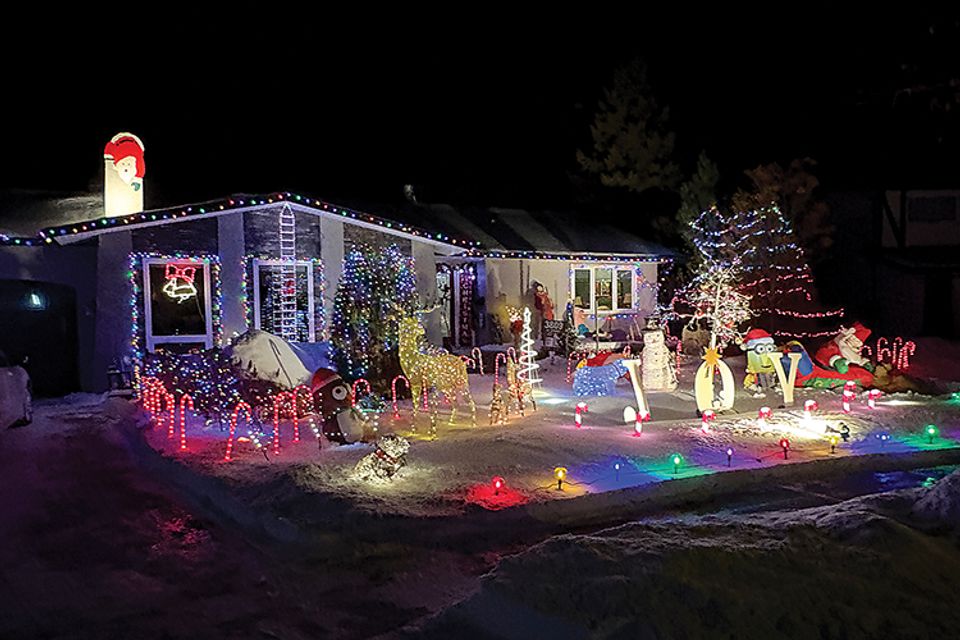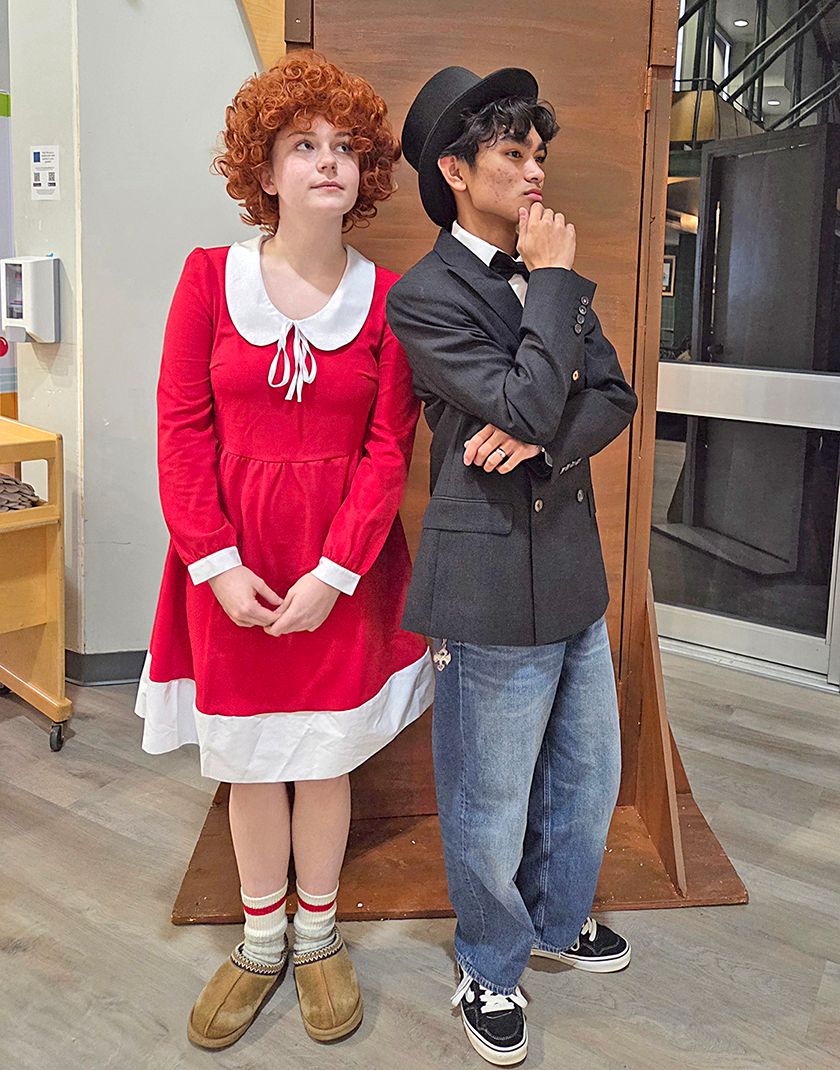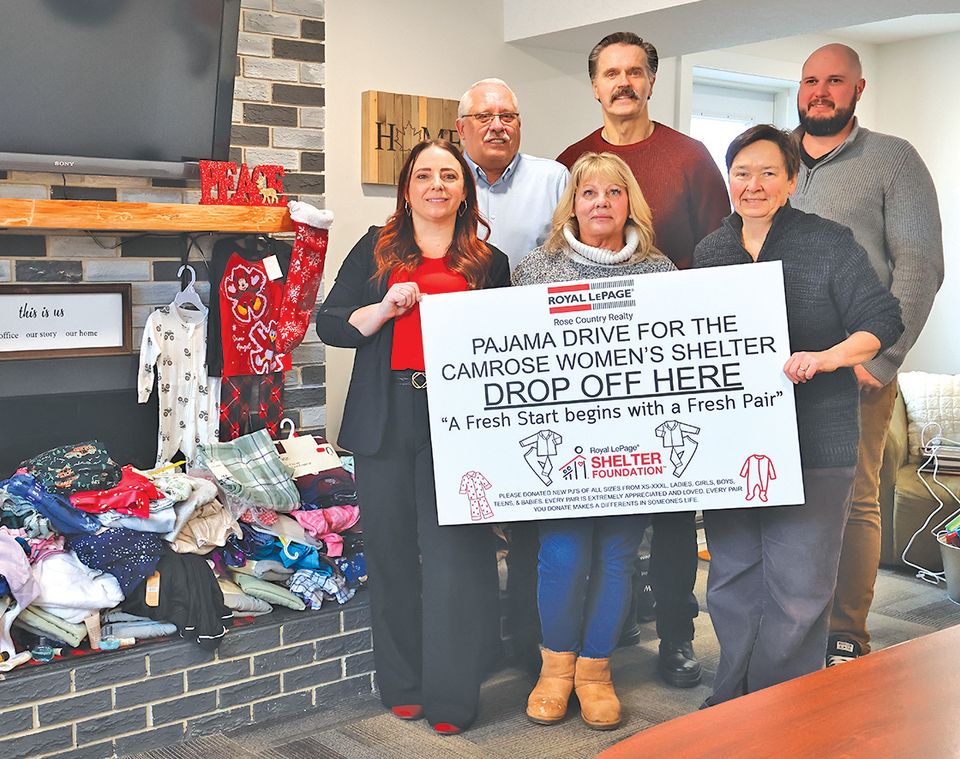Packing shoeboxes of love
Several people from Century Meadows Baptist Church spent time at the Operation Christmas Child processing centre in Calgary earlier this month. Among them were, from left, Kaelyn and Sharon Schwartz, who enjoyed working alongside the many other volunteers during their shift.
By Nadine LemingFrom children to seniors, all across Canada, it’s an annual tradition for many people to fill shoeboxes to be sent to children in need around the world with Operation Christmas Child (OCC).
Packed shoeboxes are dropped off the third week of November which is known as national collection week with two Canadian cities that process the boxes–Calgary and Mississauga.
Once the boxes have been received in one of these two cities, thousands of volunteers serve to inspect and prepare the shoeboxes for international shipping. These heartfelt volunteers stop every hour to pray for the children who will be receiving these once in a lifetime gifts of love.
During the inspection process, volunteers are looking for three things: anything that could harm the child, anything that could harm the shoebox, or anything that could be a challenge to customs. Consulting the brochures that accompany the shoeboxes OCC provides is helpful as well as suggested items from their website.
Once shoeboxes are inspected, they are then stacked onto pallets, before going into metal containers and shipped internationally. International volunteers are specially trained on how to distribute the shoeboxes, how to report on what happens and how to organize trucking, and work to collaborate with clearing and customs agents.
OCC partners with churches and communities around the world. These churches work with volunteers who know the needs of each community, reaching out to families to receive a box. How the word spreads, will depend on the needs of each community.
OCC has a principle of 1-1-1, which means one shoebox, one child, once in a lifetime.
Once the shoeboxes are distributed to each community, outreach events are organized and the Gospel is shared prior to the children receiving their shoebox. This year the boxes packed in Canada are going to Costa Rica, El Salvador, Philippines and Ukraine among other countries.
This is the first year QR codes have been incorporated. When people packing physical boxes make the recommended $12 donation for shipping, they can print a unique label that includes a QR code and a unique number that is connected to your email.
Once that box has been scanned and loaded to go overseas, you’ll get an email letting you know what country that box is being shipped to.
This is a year-round endeavor. Roxanne Smith-Thompson, regional manager for Alberta, Yukon and Northwest Territories, said, “There’s so much to do and to organize to get us to National Collection Week. We are always on the lookout for new people to join our team.”
Sharon Schwartz, part of the
Booster team, and her family have packed shoeboxes for OCC since before her children can remember. Over the years, they have seen thousands of boxes piled high at Century Meadows Baptist Church prior to them being shipped to Calgary.
This year, Sharon and her daughter Kaelyn helped inspect shoeboxes at the Calgary OCC warehouse.
Sharon said, “To be a tiny part of this worldwide ministry is as much of a blessing to us as it is to the children receiving the shoeboxes.”
This year during National Collection Week, Glenda Strauss, OCC Camrose and area coordinator said, “There were 200-plus more boxes than last year. This doesn’t include shoeboxes shipped online.”
If you haven’t had a chance to pack a box, it’s not too late, boxes can be packed online until December 31 at
www.packabox.ca.




























